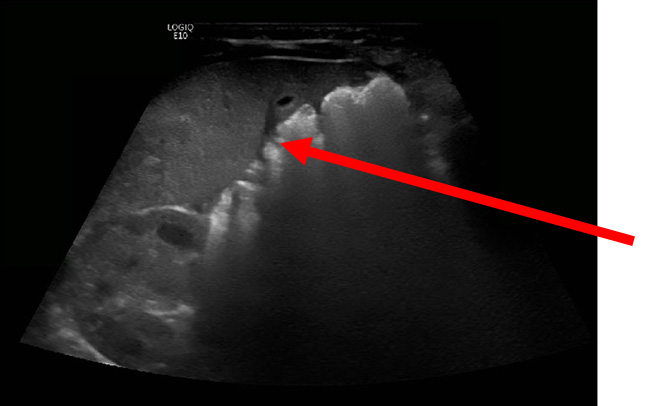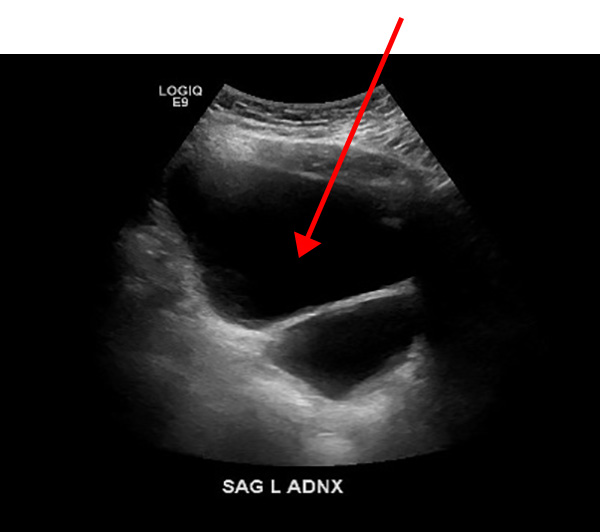What makes things bright or dark on ultrasound?

- Bright on ultrasound = hyperechoic / echogenic
- Dark on ultrasound = hypoechoic
- Black on ultrasound = anechoic
The words that we use to describe things that are bright or dark on ultrasound correspond with the physics. Higher intensity reflected sound waves are "hyperechoic" or "bright," and vice versa. Things that are anechoic have a complete absence of returning sound waves.
Acoustic impedance

This is probably a flashback to high school physics, but we'll have to review acoustic impedance to further understand echogenicity. Acoustic impedance in the body is a product of the density of the tissue and the velocity of sound in the medium.
Based on these principles, sound travels most quickly and well through solid and especially fluid, and not well through air (think of knocking on a door or whales comminicating from miles away underwater). When sound waves encounter an interface where there is a large difference in acoustic impedance, they are reflected, which causes a failure in sound waves to travel deeper into the tissue.

Anechoic - fluid (urine) in bladder.

Hypoechoic - breast mass (red arrow), hyperechoic - needle (blue arrow.)

Hyperechoic - bone (neonatal spine.)